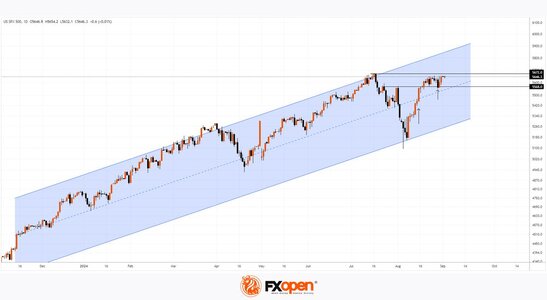USD/CHF Rebounds from Yearly Lows

The USD/CHF pair tested its yearly low slightly below 0.84100 yesterday but has since recovered to just above 0.84800 today.
The bullish sentiment was supported by positive news about the U.S. economy—data released yesterday showed GDP growth for the second quarter at 3.0%, surpassing the expected 2.8%.
Bulls may find further encouragement from events earlier this year when the head of the Swiss National Bank (SNB) warned that an excessively strong franc could pressure the country's economy. Following this, USD/CHF rose by more than 8% over four months.

TO VIEW THE FULL ANALYSIS, VISIT THE FXOPEN BLOG
Disclaimer: This article represents the opinion of the Companies operating under the FXOpen brand only (excluding FXOpen EU). It is not to be construed as an offer, solicitation, or recommendation with respect to products and services provided by the Companies operating under the FXOpen brand, nor is it to be considered financial advice.
The USD/CHF pair tested its yearly low slightly below 0.84100 yesterday but has since recovered to just above 0.84800 today.
The bullish sentiment was supported by positive news about the U.S. economy—data released yesterday showed GDP growth for the second quarter at 3.0%, surpassing the expected 2.8%.
Bulls may find further encouragement from events earlier this year when the head of the Swiss National Bank (SNB) warned that an excessively strong franc could pressure the country's economy. Following this, USD/CHF rose by more than 8% over four months.
TO VIEW THE FULL ANALYSIS, VISIT THE FXOPEN BLOG
Disclaimer: This article represents the opinion of the Companies operating under the FXOpen brand only (excluding FXOpen EU). It is not to be construed as an offer, solicitation, or recommendation with respect to products and services provided by the Companies operating under the FXOpen brand, nor is it to be considered financial advice.

